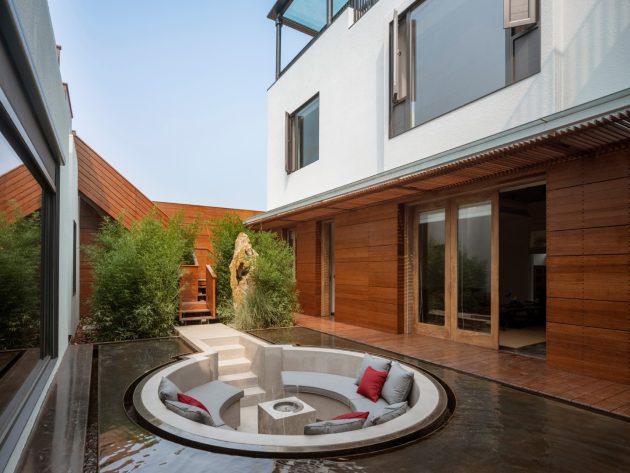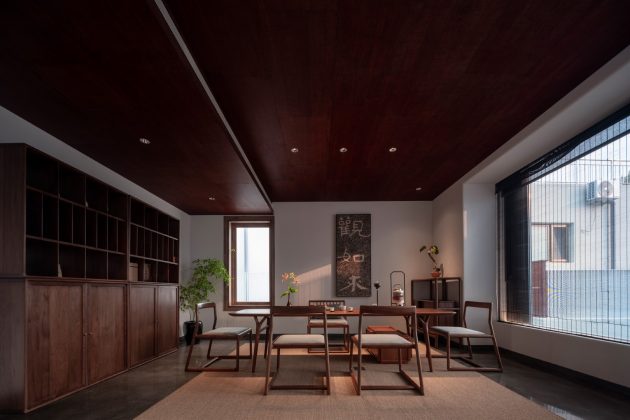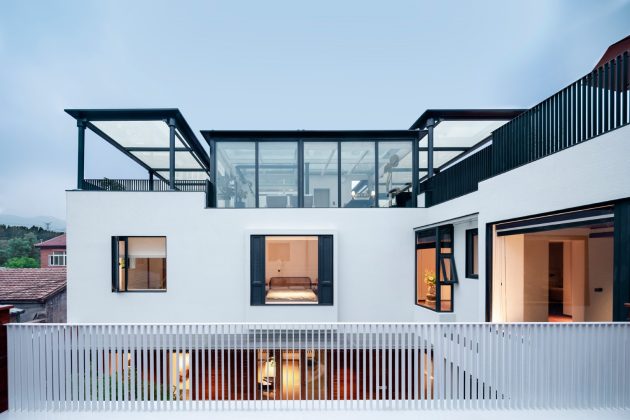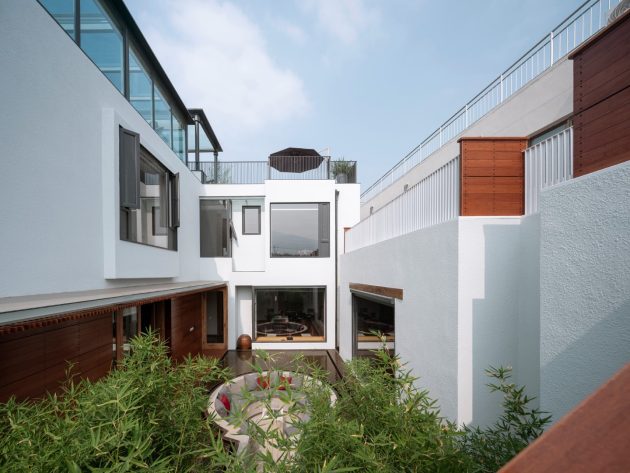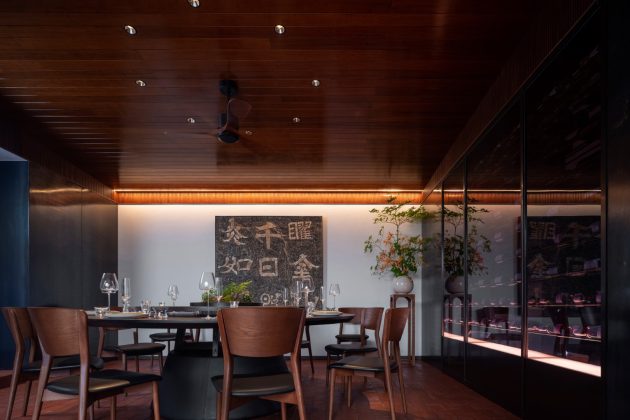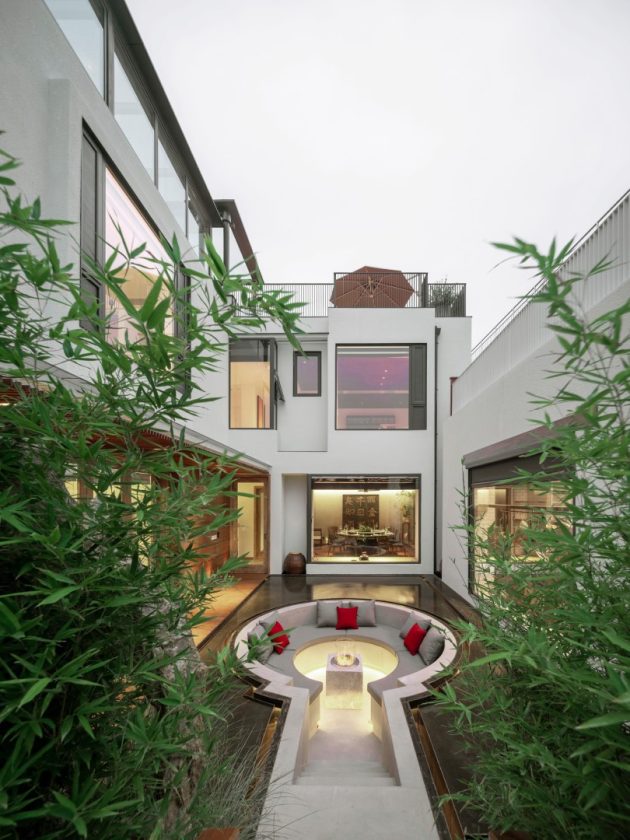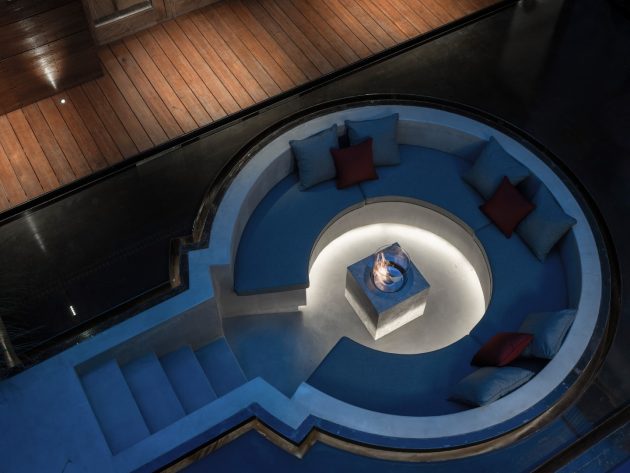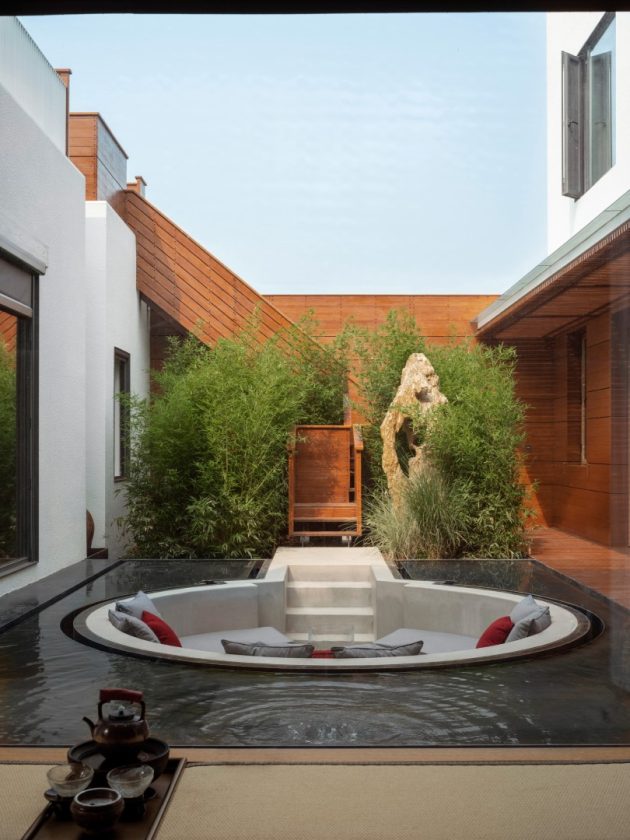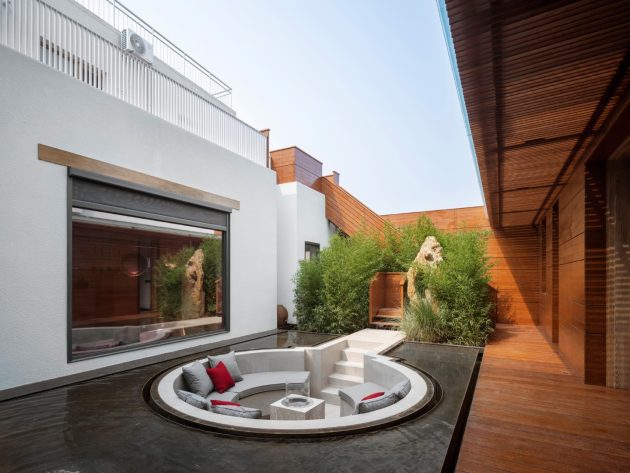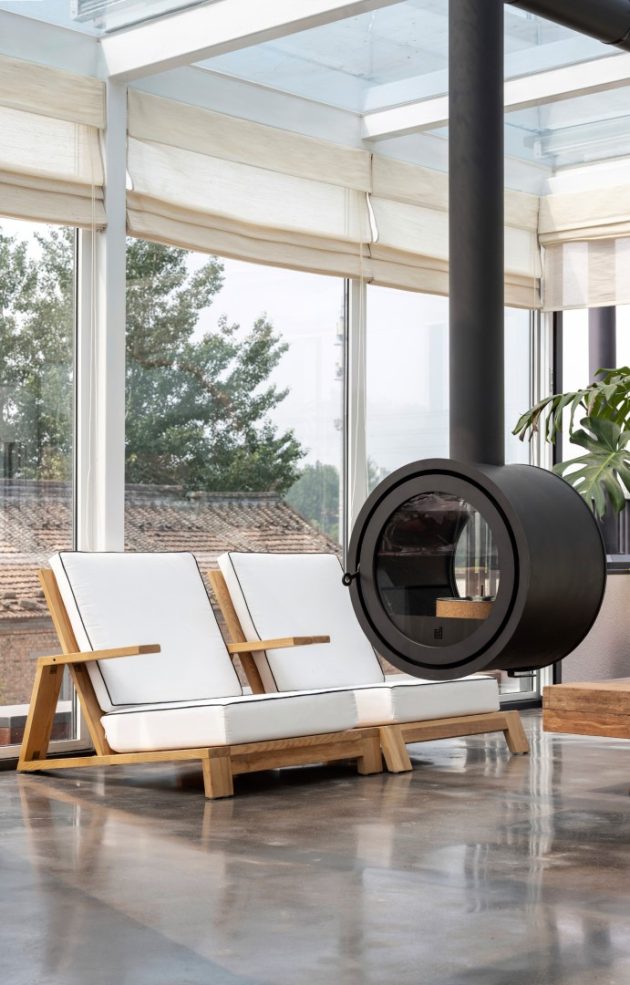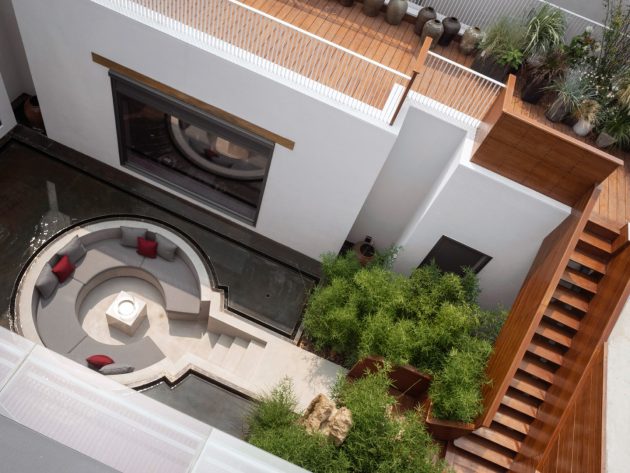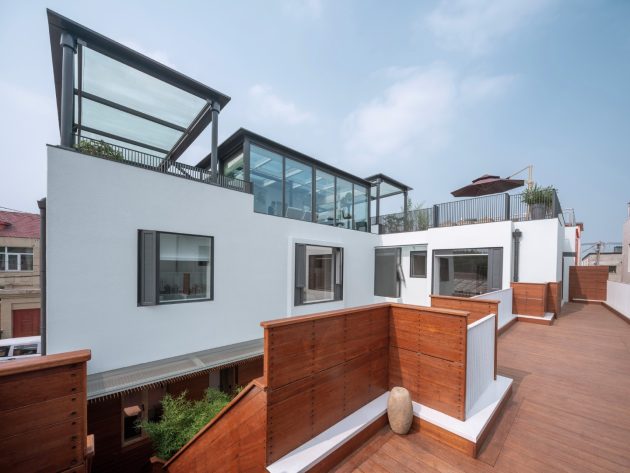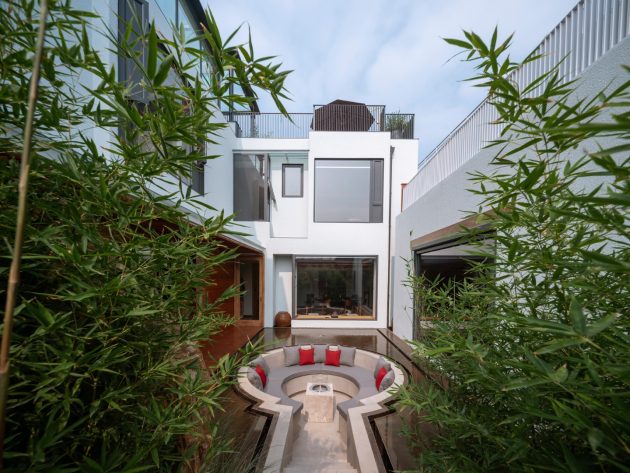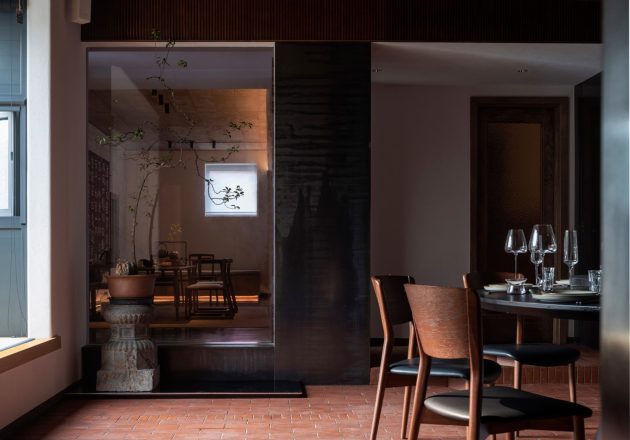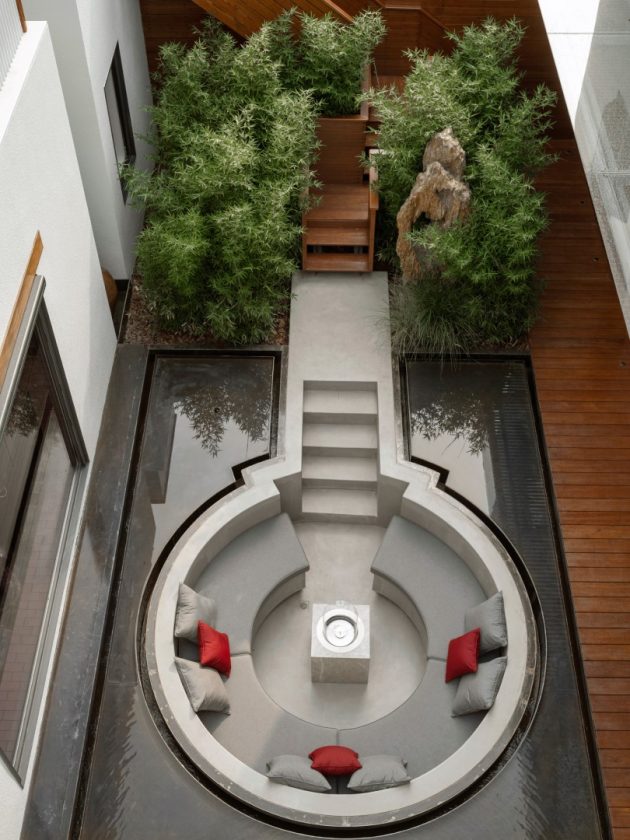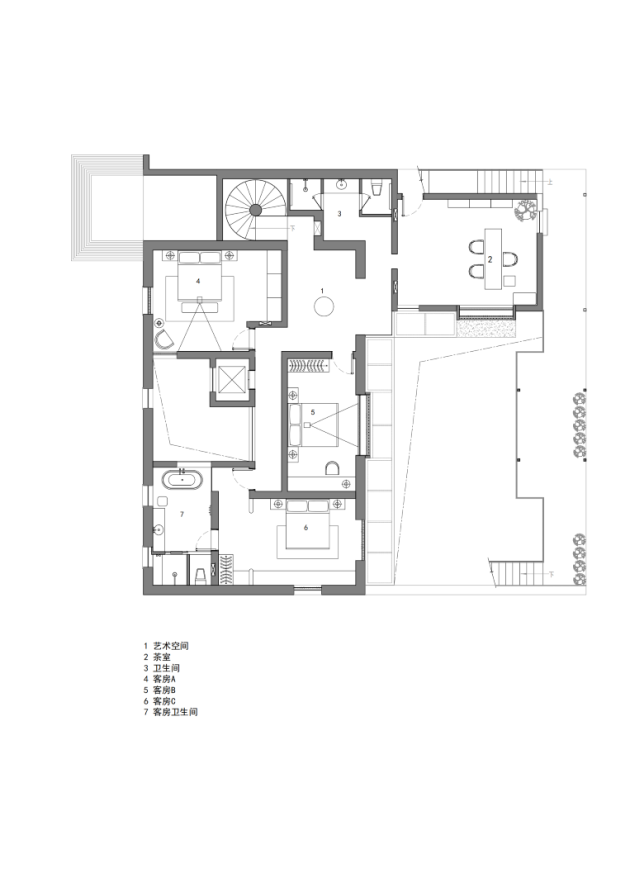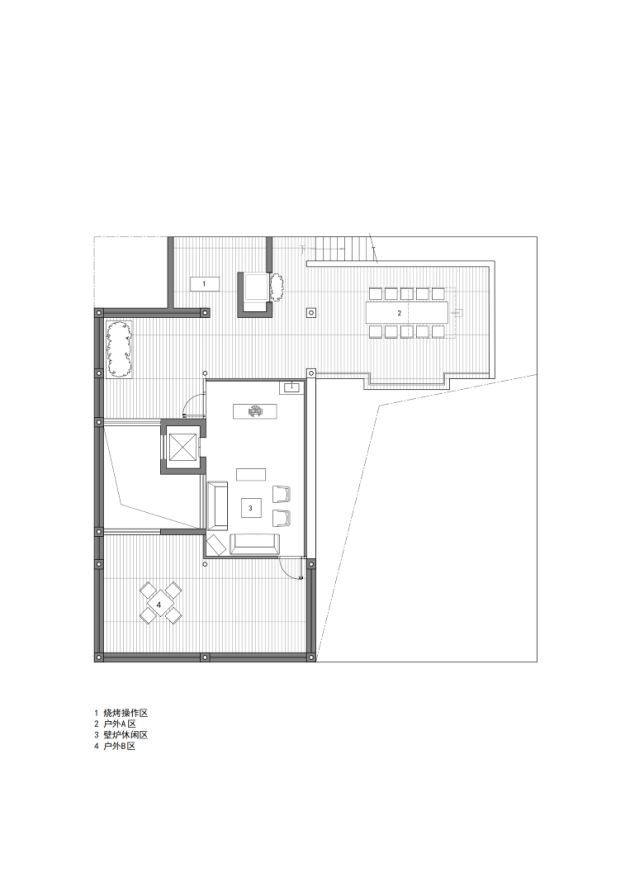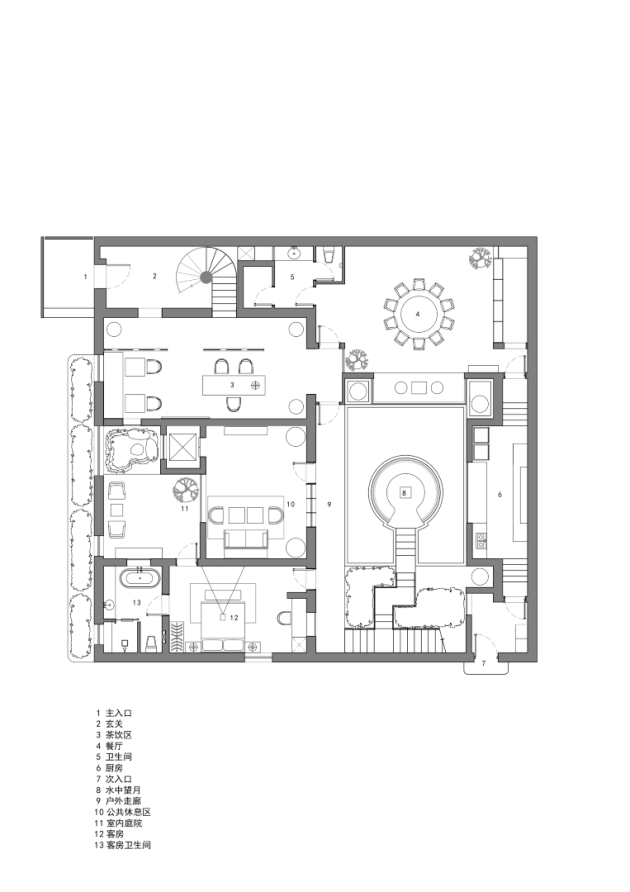Project: Guan Zi Zai House
Architects: Tanzo Space Design
Location: Haidian District, Beijing, China
Area: 4,757 sf
Year: 2022
Photographs by: Shi Yunfeng
Guan Zi Zai House by Tanzo Space Design
“When Avalokiteshvara Bodhisattva was practicing the profound prajna paramita, he illuminated the five skandhas and saw that they are all empty, and he crossed beyond all suffering and difficulty.”
– Heart Sutra
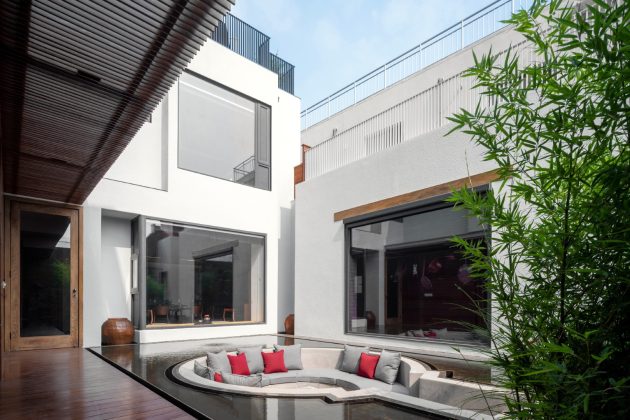
Named Guan Zi Zai (Sanskrit: avalokitêśvara, “looking on”) from Heart Sutra, the project intends to combine life experience and speculative insight.
Located in the urban-rural fringe area, the project is based on the truth-seeking for the past, nature, and the human mind.
If it happens to be a footnote to big issues such as rural revitalization, it becomes a great surprise derived from this basis.
Intervention – Without presupposing purpose
The project is located in Haidian District, Beijing, where the famous Jingxi Rice and Qianlong Imperial Fields are no longer well known to young people. Under the nourishment of the Xishan Mountains and Yongding River, the villages in the joint region of urban and rural areas have taken over the baton of urban development. As a result, countryside houses may become the focus in this situation, influencing the villages and towns and the people there in the new era.
Wang Daquan, the designer of Tanzo Space Design was commissioned to complete the landscape and interior design for a two-story house. This red brick building constructed by local workers is no different from other houses in the village. The owner has an open attitude towards the interior design, which allows the complete presentation of Guan Zi Zai. Without any reference because of the maximized freedom, the designer proposed an intervening method without any presupposing purpose, which takes the physical environment and the owner’s habits as the fundamental law and logic. Although slower, this process guarantees the right direction, which has been proven by fact.
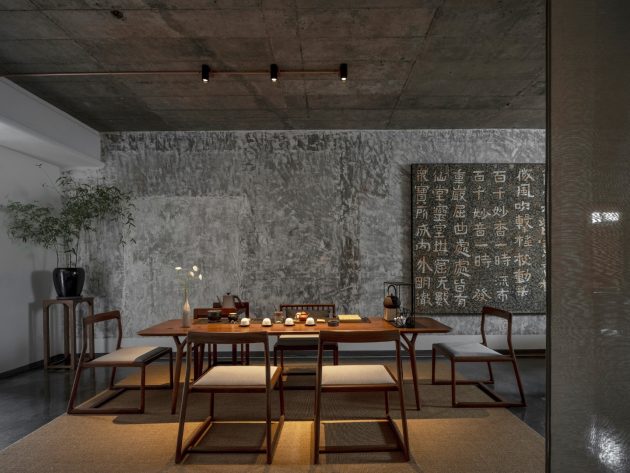
Taking advantage of the situation – Appropriately
To arrange the air-conditioning pipeline and ventilation, the door head fixed plates form a double-sided slope, which unexpectedly looks like a small tower from a distance, and the owner likes its implied meaning of promoting to a higher position. What’s more, the black half-enclosed wall gives entering the door meaning of approaching and retreating.
This kind of flexible treatment runs through the entire design process, and only when one is in it can one realize that the village is far from static. For example, when the designer was still immersed in the landscape formed by the old roof ridges of the front and rear houses, the front house had already been demolished and become a two-story building with stainless steel railings. In the meantime, the narrow and sloping drainage gap between the two buildings required further adjustment of the interior structure.
A pavilion-like area was inserted in the center of the house, opening up the tense artificial interior space into the environment. Small amount of water was embedded in the sinking area enclosed by cement, among which the children often jump back and forth between the pools in the courtyard. The width of the water is just suitable for children’s stride.
Sitting around this small area shaped like a key, there are hundreds of millions of stars up in the sky and romantic moonlight nearby. The literati-style romance blends with the countryside, opening a life in a simple and lovely way. Taking advantage of the situation makes the emphasis relaxed, and Guan Zi Zai comes into being.
Compatibility – Creating experience
From a large-scale perspective, the house itself is the compatibility between practice and outside, so the designer should first make a container to carry them. Windows are open on the side with a view, and the window size is determined according to the landscape. The view of the Xishan Mountain and the river in front of the house pours in from the window, and natural light comes in from the skylight, thus different scenery can be seen on the first and second floors. The window in the kitchen turns the chef into a role on the stage, adding more fun and interaction except for cooking. When one can be seen, one can be respected.
The lines of the interior are firmly held together with the building texture, which supports the entire building together with the red brick and roof that embodies the sensibility and craftsmanship of the 1970s. The partially raw brick wall after demolishing the old staircase and the new white spiral staircase at the entrance constantly exchanged nostalgia and new stories.
From the exterior to the interior, the application of materials extends the sense of respect and rationality. Cement, solid wood, slab, glass, and steel plate are used to create richness and tension through collage and combination. At the same time, nature and the simplicity of the materials are used to control the space atmosphere in a comfortable and appropriate self-consistency. In this way, the design direction is defined by the material limitation.
Improvisation – Surging vitality
Enough room left for materials and nature brings the harmonious integration between space, nature, and people. This dynamic balance makes the space full of vitality.
The sky in Beijing is sometimes gray, and the large area of white walls purifies the palette. A large number of bamboos are planted in the courtyard to represent the East, creating another natural landscape different from the villages and towns, like Beijing versus Jiangnan. Neither sunlight, rain nor sound is not isolated from the outdoor, and the southern canna and northern plants share the flower house together. The boundaries between the old and new, inside and outside, north and south, urban and rural areas are dissolving under the expression that there is room for approaching and retreating.
After the design is completed, the owner often invites friends to walk into the house at different times of the day. Every time he marvels at the unpredictable plant forms and flowing light and shadow; the guests will find a place to sit down as if at home and kids keep inventing new games; such great quiet improvisation is staging there all day long.
Countryside – Modernized tradition medium
Wang Daquan likes designs that “live in self-awareness”. All interior furniture comes from domestic design brands, which are harmonious when put together because of their prior commonality; utensils of the Qing and Ming Dynasty return to daily life; the precious cliff stone-carved inscriptions exist with light and the times; the delicate artwork cut by the florist Wan Hong reveals a feeling of Song Dynasty at the end of the corridor; on the bay window couch facing the courtyard pool, a beam-lifting teapot sits silently; the abandoned Nu Er Hong rice wine jar has been transformed to add endless fun to courtyard nights.
The elements belonging to the imperial court and secular coexist in the same space, and the countryside has given a vast world for it. The traditional spiritual experience of the Chinese presents a natural state of stretching in the contemporary countryside. And the intervention of design is like dusting off so that the precious things appear.
The design starts from solving problems and slowly goes deep into the cultural and emotional part, just like rice growing out of the soil, natural and traceable.
Conclusion
“I prefer to pay attention to the spatial characteristics and experience of a place. Using the harmony of space, light, and sound to impress people, without doing it deliberately, can make things have a human nature beyond imagination.”
In addition to the full trust given by the house owner, the workers on site also gave full play to their creativity and worked together with the designer to overcome many complex construction difficulties according to local conditions. Through this creation by the participation of many people, the precious craftsman spirit is outstanding.
Prof. Cho-Yun Hsu said that the Chinese cultural spirit is the reconciliation of man and nature. From this point of view, the village and the people it nurtured have the natural endowment of perception and insight in advance. The design has practiced a vipassana and then waited for it to change.
-Project description and images provided by ZZ Media
Plans

